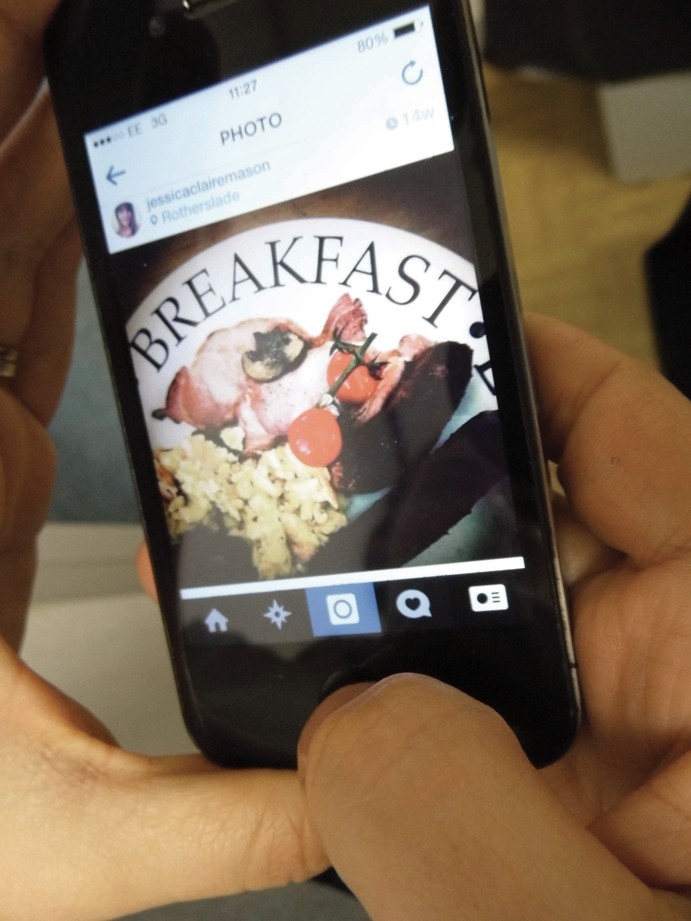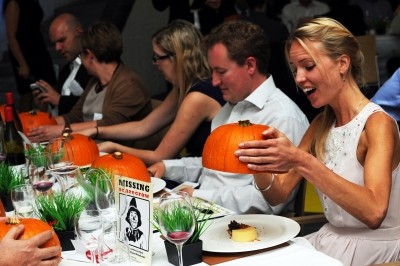BUSINESS SUPPORT
Food and social media

It started with a tweet. And before long customers were coming from the other side of the world. Even now, at least once a week a group of Japanese tourists walk into the Ship in Wandsworth, South London, order a burger, take a photo of it and leave.
It’s a peculiar case, but as Oisin Rogers, manager of the Young’s pub, says, "it’s an example of the power social media can have".
A power growing numbers of pubs are harnessing. And for some it’s become a vital element in their success.
Stosie Madi, lessee of the Parkers Arms at Newton in Bowland, Lancashire, is in no doubt.
"I can honestly say that without Twitter and Facebook our business might not have made it through the recession. We’re a remote pub run without the resources of a group and no massive press budget, so we have to find ways of grabbing customers. Social media lets people know we’re here, and with awareness comes trade.
Business booster
"If I’ve not been on Twitter I notice a drop in the number of customers we have.
"Twitter is the most effective, although the more people who ‘like’ your Facebook page the better it gets. It’s better than a newsletter because you know who you’re interacting with, and they share what you post with their friends and family.
"While I’m cooking I post pictures of dishes on the pass, and we post pictures of the local grouse shoot, the birds, the shooters, the plucking, the guts - so you can see what they’ve had to eat on the moors. We’ve also run a competition on Twitter to guess the bird.
Tweet treats
"One of the most successful things we’ve done is Tweet Treats," she goes on. "If people tweet us when they’re coming to eat they get specially treated to canapes. People join Twitter just so they can tweet us.
"Then they’ll tweet pictures of their food and we retweet. When they thank us we retweet that, too. It’s self-propagating.
"When we win an award or the pub is reviewed we put it on there and people will share. It gets people talking and retweeting.
"We also use social media to pre-market, to find out whether people would like to eat a new dish we’ve created. Effectively we’re using our followers for market research.
"But the important thing is the conversation, connecting with other people and finding out what’s ticking their boxes," she adds. "I wear my heart on my Twitter sleeve. If I go to the dentist I tweet about it. That way people will open up to you. It’s like a friendship."
Pre-launch power
Social media can be an important tool even before you’ve launched the business. Lessee James Laffan and partners John and Kimberley Calton were using it for six months before they opened the Staith House in North Shields, Tyne & Wear, in November 2013.
"Otherwise we would have found it quite difficult to get the word out," he says. "As it was we hit the ground running and we’ve not had a quiet spell since.
"You’ve got to keep at it. We put up something meaningful on Twitter every day, not only pictures of dishes but pictures of produce, especially fish, as we’re right on the quayside here.
"We might put up a huge halibut that’s going on the menu and a lot of people will come down or book a table because they’ve seen it on Facebook or Twitter.
"To mark our first birthday we gave away a Sunday lunch on Facebook. That kind of thing generates thousands of views."
Peter McKenna, with Ivan Stein joint owner of the Gannet in Glasgow, started the bar-restaurant on social media a full year before opening.
"We wanted to generate interest among food communities in Scotland, posting about our progress. Journalists were taking note and we had the critics in here in the first week.
Competition time
"Now we post photos of food and run competitions as a way of engaging with clientele and maintaining awareness. We make our own bread every day and I’ll take photos on my phone of the dough proving and coming out of the oven. People will take notice of images, you get a response.
"If there’s a lull in the day, I’ll post something on Facebook. It’s useful when you need to say something of more substance, such as reporting on our visits to farms, or meetings with scallop divers. It sets out what we’re about.
"Competitions are good to get people engaged and retweeting. We ran a competition for best food photo and used the pictures ourselves as a promotional tool.
"Social media is also a good source of feedback about what customers think of what we’re doing – better than Trip Advisor."
The use of social media by Great British Pub of the Year the Grafton Arms in Kentish Town, North London, has attracted academic attention. Lessee Susie Clarke has been interviewed by a student writing a dissertation on the subject.
"We post a couple of times a day on Twitter and Facebook, which are largely different audiences," she says. "Twitter is the most useful. It works better than Facebook in London.
Picture power
"We put up flyers for events, pictures of the ales on the pumps and just people having a nice time in the pub!
"When we started we found it was a great way to entice lunchtime punters. We messaged local businesses through Twitter and we began to see a real influx of people that way. You have to remind people you’re here.
"It’s nice to engage customers, to get them to retweet and feel a part of things. My advice is to update regularly and use lots of images to keep it interesting – it’s 100% better than plain text."
Don't fear food porn
Pubs have nothing to fear from food porn. Research has revealed it’s nothing like as tasty as the real thing.
In an experiment conducted by Artizan Catering and Digital Blonde, leading food writers – plus chef Antonio Carlucci – were served seven courses and asked to rate their emotions on tasting each dish. Results were compared with an online study among people who only saw pictures.
Perhaps not surprisingly, the food scored more highly with those who got to eat than those who got to watch. More interestingly, when the picture was accompanied by a description the reaction was significantly stronger, suggesting it’s a good idea to post some words along with images of dishes on social media.
Social media training
Brewer Carlsberg UK has teamed up with CPL Training to create an ‘Essential Guide to Social Media’ for its freetrade customers.
It provides licensees with information and advice on how to get started, which platforms to engage with, how to find, and grow, an online audience and how to increase profits by using social media.
After setting out the business benefits of social media, the online course goes through the various platforms, from Twitter, Facebook and Google+ to image-sharing sites like Instagram, Flickr and Pinterest, helping pubs choose which best suits their audience and style of operation, before going on to advise on what to put in your posts.
Tips from Carlsberg and CPL's essential guide on creating engaging content:
Keep it short
Don’t just sell, include news and stories, chat and wit
Use images and photos
Be current, respond to news, the weather, local events
Encourage conversation by asking questions
Use competitions and prize draws if appropriate
Use a consistent tone that accurately represents your business personality.






